Film photography is experiencing an unprecedented renaissance, and choosing the right 35mm camera can make your analog journey all the more enjoyable. Whether you're a seasoned photographer returning to your roots or a digital native ready to embrace the magic of film, these 10 exceptional cameras represent the perfect blend of reliability, features, and value for modern shooters.
1. Canon EOS Elan 100
Expect to Pay: $30
The Canon EOS Elan 100 stands as one of the most underrated gems in Canon's extensive film camera lineup, offering modern conveniences wrapped in a compact, ergonomic package that feels surprisingly contemporary even today. Released in the 1990s during Canon's golden era of SLR development, this camera bridges the gap between the complexity of professional bodies and the simplicity that everyday photographers crave. Its electronic brain handles exposure calculations with remarkable precision, while the intuitive control layout ensures you spend more time creating and less time fumbling with settings.
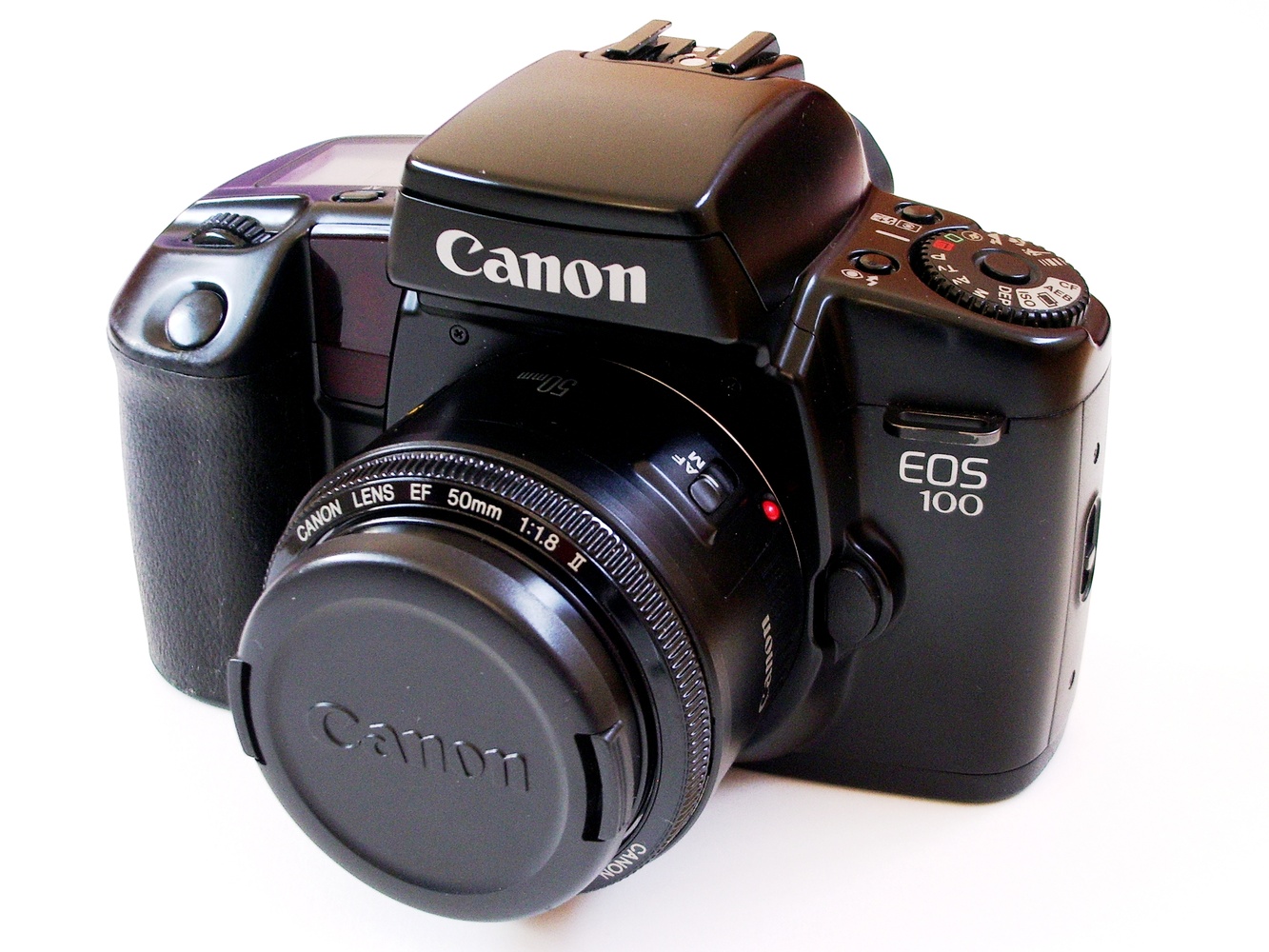
The real magic happens when you pair the Elan 100 with Canon's legendary EF lens collection. The camera's autofocus system, while not lightning-fast by modern standards, delivers consistent results across various lighting conditions. Build quality remains solid after decades of use, though buyers should check for the common LCD display issues that can affect older electronic cameras. For photographers seeking a reliable, feature-rich introduction to Canon's film ecosystem without the premium price of professional bodies, the Elan 100 represents exceptional value.
2. Nikon F6
Expect to Pay: $1,100
The Nikon F6 represents the absolute pinnacle of film camera engineering, serving as Nikon's final love letter to the medium that built their reputation. Introduced in 2004 as the ultimate expression of decades of innovation, this camera incorporates technology that rivals and often surpasses contemporary digital bodies, wrapped in the weather-sealed, tank-like construction that made Nikon's F-series legendary among professionals. The F6's 3D Color Matrix metering system analyzes scenes with the sophistication of a computer, delivering consistently accurate exposures even in challenging lighting conditions that would fool lesser cameras.
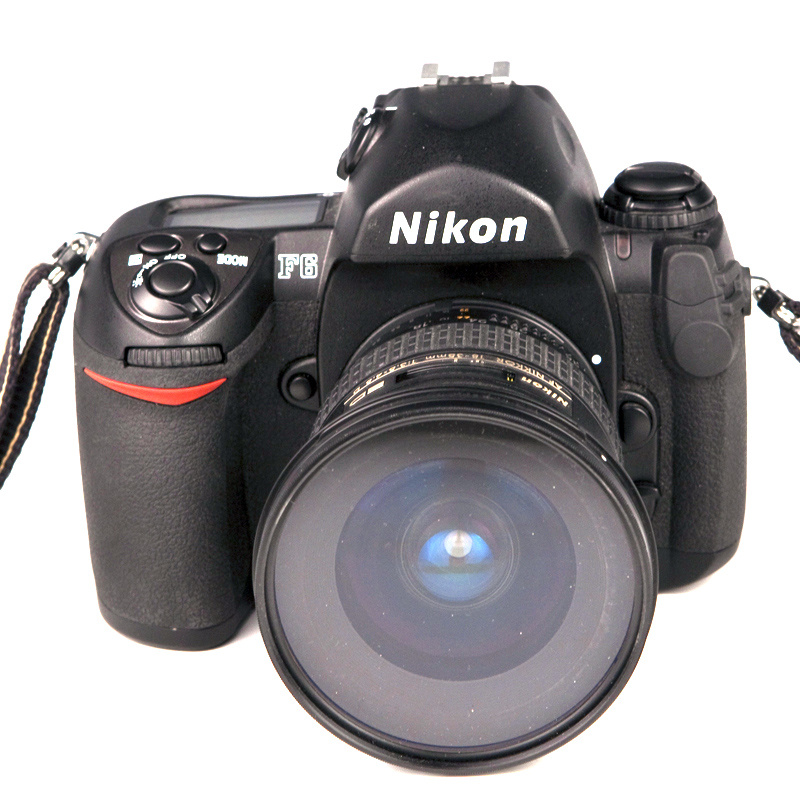
Weather-sealing throughout the body ensures the F6 can handle harsh conditions that would sideline lesser cameras, while the bright, clear viewfinder provides an immersive shooting experience that digital cameras struggle to match. The camera's sophisticated exposure modes handle everything from fast-changing sports action to delicate studio lighting, while manual controls remain instantly accessible for photographers who prefer hands-on control. While the F6 commands premium prices reflecting its professional pedigree, it represents the ultimate investment for serious film photographers who demand uncompromising quality and reliability. For many professionals, the F6 isn't just a camera; it's the definitive tool for their craft.
3. Pentax K1000
Expect to Pay: $100-200
The Pentax K1000 occupies a unique position in photography history as the camera that taught millions of students the fundamental principles of exposure, composition, and manual control. Manufactured from 1976 to 1997 with minimal changes, this mechanical marvel prioritizes simplicity and reliability over electronic conveniences, forcing photographers to master the relationship between aperture, shutter speed, and ISO through hands-on experience. Its completely manual operation means the camera functions perfectly even when batteries die, making it an ideal companion for remote adventures or extended shooting sessions where electronic reliability becomes crucial.
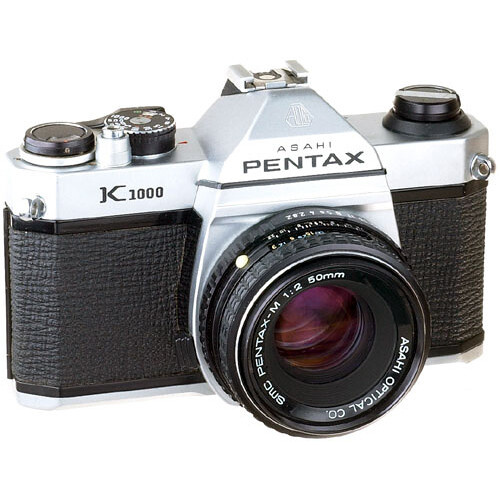 Built like a tank with a precision that reflects Japanese manufacturing at its finest, the K1000's controls operate with satisfying mechanical clicks that provide tactile feedback missing from modern electronic cameras. The bright, clear viewfinder displays essential shooting information without cluttering the view, while the built-in light meter provides accurate guidance for proper exposure. What truly sets the K1000 apart is its compatibility with Pentax's extensive K-mount lens system, offering access to decades of optical excellence at remarkably affordable prices compared to other vintage lens ecosystems.
Built like a tank with a precision that reflects Japanese manufacturing at its finest, the K1000's controls operate with satisfying mechanical clicks that provide tactile feedback missing from modern electronic cameras. The bright, clear viewfinder displays essential shooting information without cluttering the view, while the built-in light meter provides accurate guidance for proper exposure. What truly sets the K1000 apart is its compatibility with Pentax's extensive K-mount lens system, offering access to decades of optical excellence at remarkably affordable prices compared to other vintage lens ecosystems.
For photography educators and students, the K1000 remains the gold standard because it strips away automated conveniences that can mask fundamental concepts, forcing users to understand how their choices affect the final image. The camera's mechanical shutter operates from 1 second to 1/1,000 second without requiring batteries, though the built-in meter does need power to function. Modern film photographers appreciate the K1000's honest, straightforward approach to image-making, where every successful photograph represents a conscious decision rather than automated luck. While not the most sophisticated camera on this list, the K1000 teaches lessons about photography that remain relevant regardless of technological advances, making it an invaluable tool for anyone serious about understanding their craft.
4. Olympus OM-1
Expect to Pay: $100
The Olympus OM-1 revolutionized SLR design when it debuted in 1972, proving that professional-quality cameras didn't need to be massive, heavy burdens that required dedicated camera bags. Olympus achieved this remarkable feat through innovative engineering that relocated the light meter from the pentaprism to the camera body, allowing for a dramatically smaller and lighter design without sacrificing functionality. The result is a camera that feels almost toy-like in modern hands yet delivers image quality that rivals much larger contemporaries, making it perfect for travel photographers, street shooters, and anyone who values discretion alongside performance.
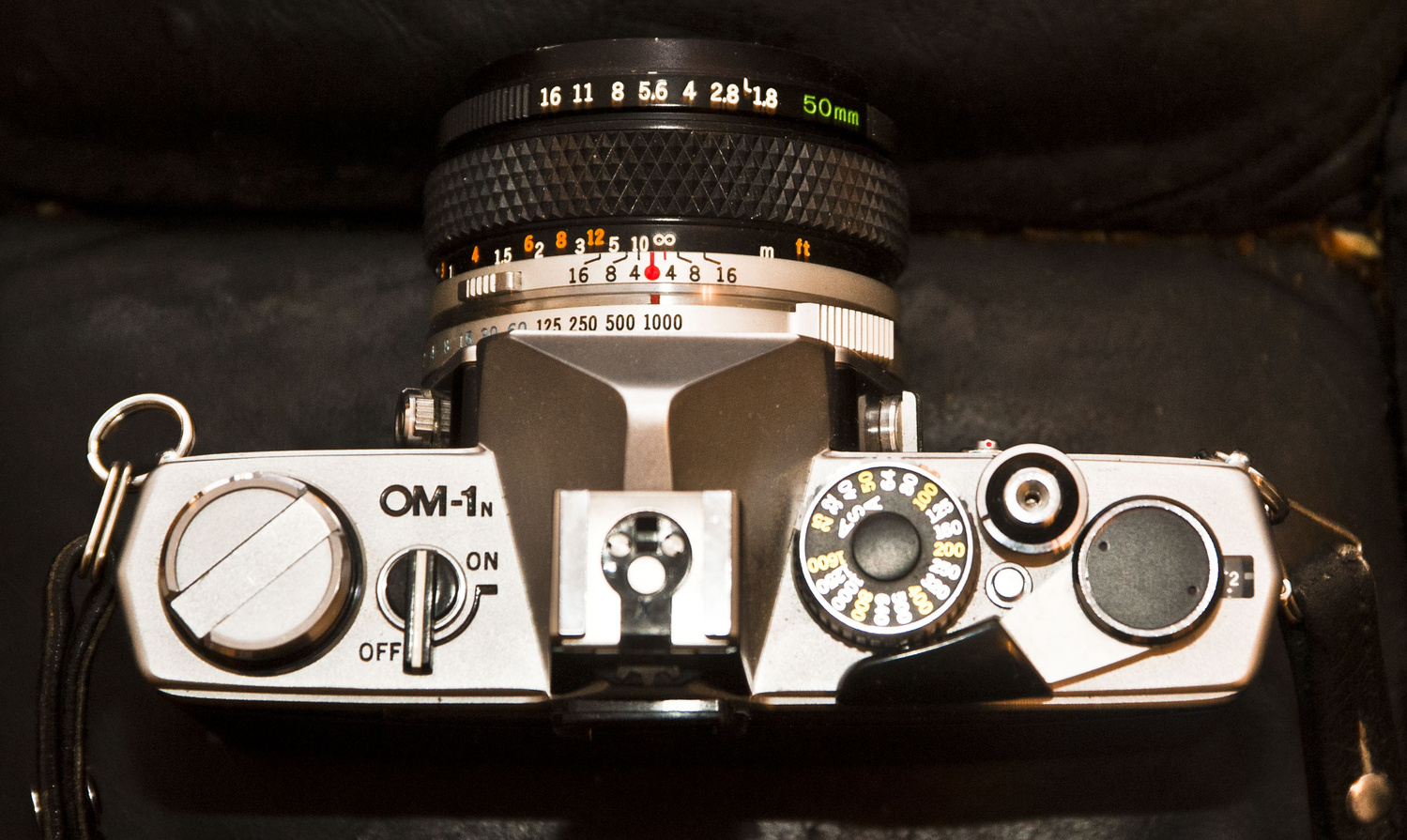
What truly sets the OM-1 apart is its perfect balance of mechanical precision and user-friendly operation, with controls that fall naturally under fingers and operate with satisfying precision. The camera's shutter mechanism operates smoothly from 1 second to 1/1,000 second, while the mirror dampening system reduces vibration for sharper images at slower speeds. For photographers who appreciate craftsmanship and attention to detail, the OM-1 represents a pinnacle of camera design where every element serves both functional and aesthetic purposes. The later OM-1n variant addressed some minor issues while maintaining the original's character, making either version an excellent choice for photographers who refuse to compromise on quality despite preferring compact equipment.
5. Minolta X-700
Expect to Pay: $80-100
The Minolta X-700 perfectly embodies the sweet spot between advanced features and user-friendly operation that defined the best cameras of the 1980s. Released in 1981 as Minolta's flagship amateur SLR, this camera introduced Program mode to a generation of photographers while maintaining the manual controls that serious shooters demanded. The X-700's sophisticated exposure system automatically selects both aperture and shutter speed in Program mode, yet seamlessly transitions to Aperture Priority or full Manual operation with simple control changes, making it equally suitable for beginners learning exposure fundamentals and experienced photographers who want quick, reliable automation.
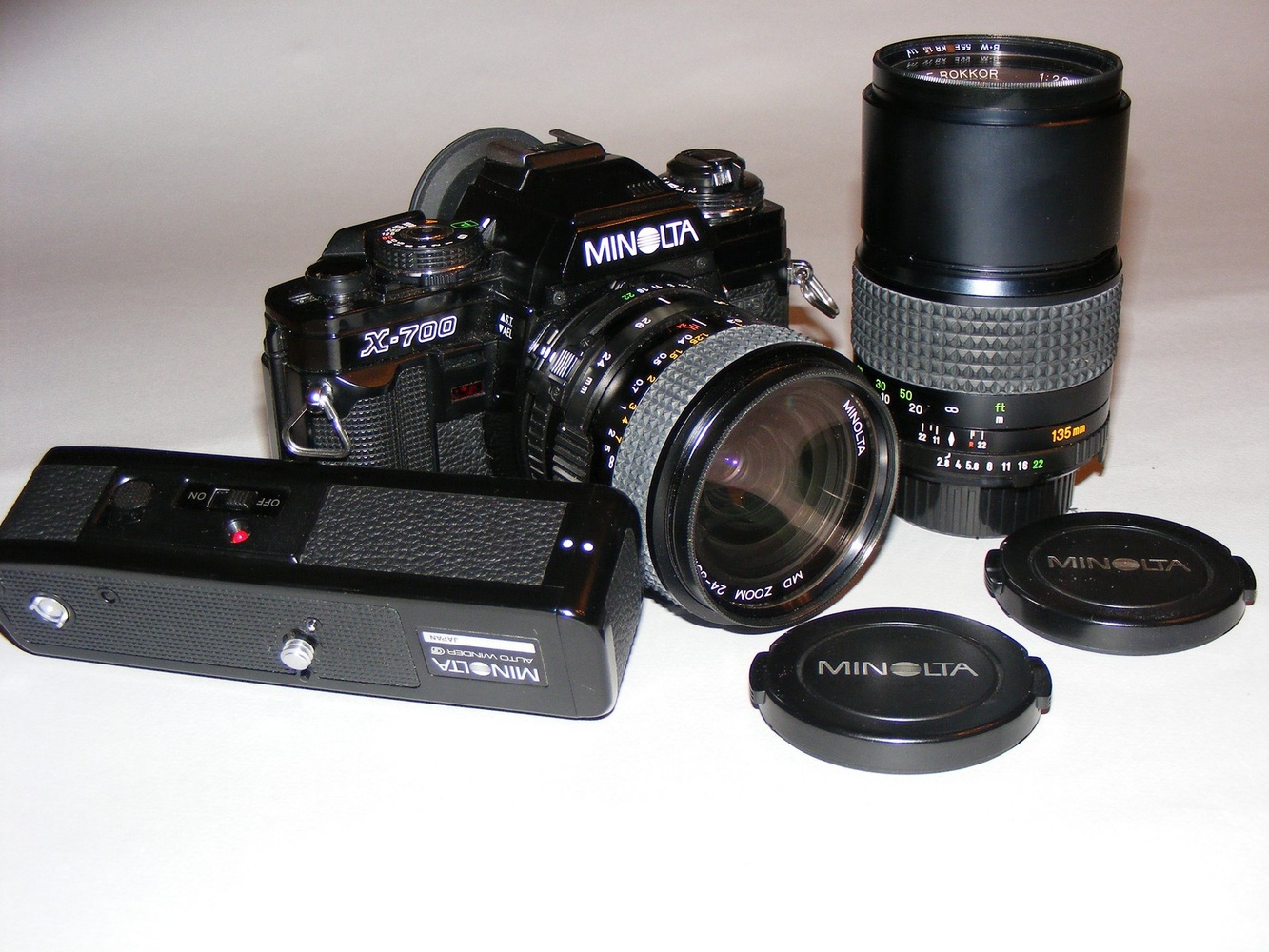
Minolta's legendary attention to optical excellence shines through the X-700's bright, clear viewfinder, which displays comprehensive shooting information. The camera's electronic shutter system operates from 1 second to 1/1,000 second with remarkable consistency, while the built-in light meter provides accurate readings across various lighting conditions. What truly distinguishes the X-700 is its compatibility with Minolta's exceptional MD and MC lens lineup, offering access to some of the finest optics ever produced at prices that remain reasonable compared to other vintage systems.
The camera's ergonomic design feels natural in hands of all sizes, with controls positioned logically for quick adjustments without taking your eye from the viewfinder. Minolta's build quality ensures these cameras continue functioning reliably decades after production, though potential buyers should verify proper capacitor function in the electronic systems. For photographers seeking a versatile, reliable introduction to serious film photography, the X-700 offers an ideal combination of automation and manual control that grows with your skills. The camera's sophisticated metering and exposure systems rival those found in much more expensive professional bodies, making it an exceptional value for quality-conscious photographers who don't need weather sealing or ultra-fast motor drives.
6. Canon AE-1 Program
Expect to Pay: $100-200
The Canon AE-1 Program holds the distinction of being one of the best-selling SLRs in photography history, a testament to Canon's ability to create cameras that perfectly balance advanced features with approachable operation. Building on the success of the original AE-1, the Program variant added full Program mode automation while retaining the manual controls that made its predecessor so popular among both amateur and professional photographers. This combination of automated convenience and manual override capability created a camera that could grow with photographers as their skills developed, explaining its enduring popularity among film enthusiasts today.
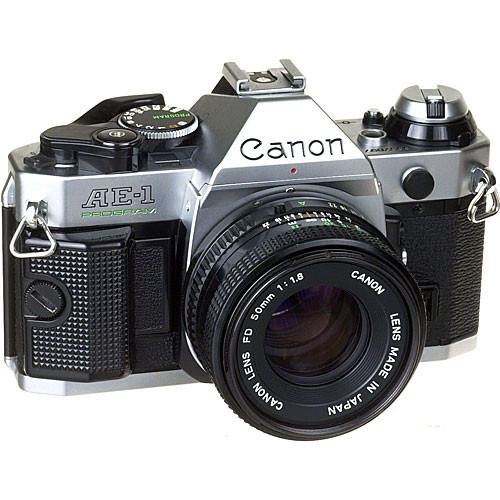 Canon's engineering excellence shows in every aspect of the AE-1 Program's design, from its precise electronic shutter system to the bright, informative viewfinder display that keeps essential shooting information clearly visible. The camera's electromagnetic shutter release contributes to the notably quiet operation that made it popular among wedding photographers and photojournalists who needed to work discreetly. What sets the AE-1 Program apart from many electronic cameras of its era is its robust construction quality, with many examples continuing to function flawlessly decades after production despite regular use and age.
Canon's engineering excellence shows in every aspect of the AE-1 Program's design, from its precise electronic shutter system to the bright, informative viewfinder display that keeps essential shooting information clearly visible. The camera's electromagnetic shutter release contributes to the notably quiet operation that made it popular among wedding photographers and photojournalists who needed to work discreetly. What sets the AE-1 Program apart from many electronic cameras of its era is its robust construction quality, with many examples continuing to function flawlessly decades after production despite regular use and age.
The camera's greatest strength lies in its seamless integration with Canon's legendary FD lens system, offering access to optical excellence that rivals modern glass at a fraction of contemporary prices. From the legendary 50mm f/1.4 to specialized macro and telephoto lenses, the FD system provides tools for virtually every photographic endeavor. While the AE-1 Program predates the EF mount system, adapters allow modern Canon shooters to experiment with FD glass on digital bodies, adding value to any lens collection. For photographers seeking a reliable, feature-rich introduction to Canon's film heritage, the AE-1 Program represents exceptional value and proven reliability that has satisfied millions of photographers worldwide.
7. Nikon FM2
Expect to Pay: $250-300
The Nikon FM2 represents the pinnacle of mechanical camera design, offering professional-quality construction and performance in a package that operates completely independently of batteries for all essential functions. Introduced in 1982 as the ultimate expression of Nikon's mechanical engineering expertise, the FM2 features a titanium-bladed shutter capable of reaching 1/4,000 second, making it one of the fastest mechanical shutters ever produced at the time. This remarkable speed capability, combined with flash synchronization up to 1/200 second, provides creative flexibility that remains competitive even by modern standards.
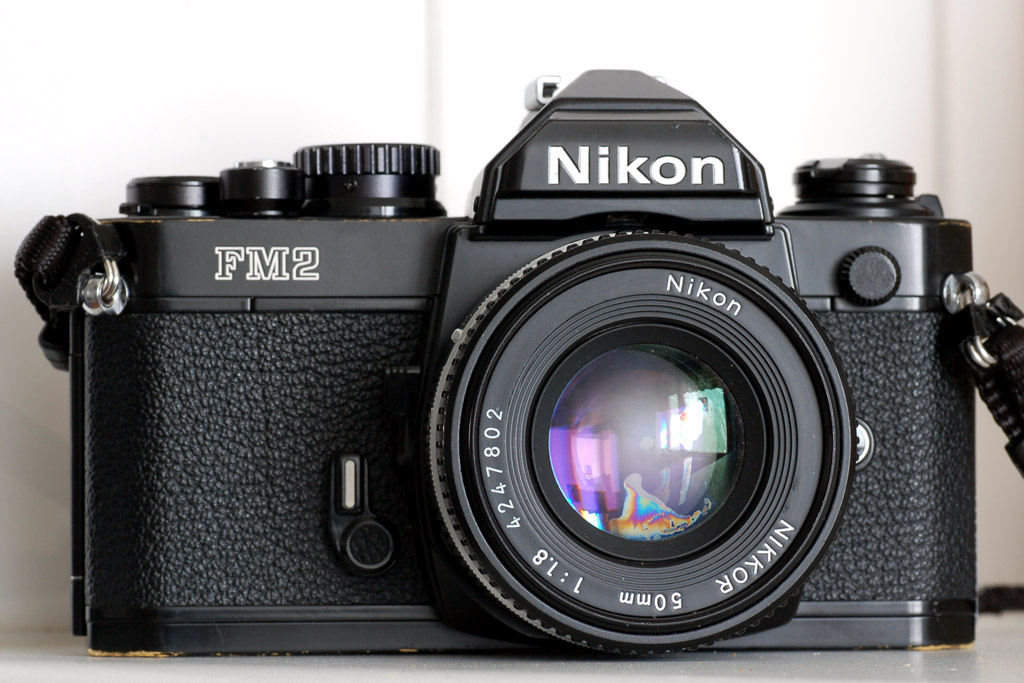
Nikon's legendary F-mount system provides the FM2 with access to one of the most extensive lens lineups in photography history, from vintage manual focus glass to modern autofocus lenses that can be used in manual mode. The camera's bright, clear viewfinder makes manual focusing a pleasure, while the robust construction ensures decades of reliable service. For photographers who prioritize reliability, mechanical precision, and independence from electronic systems, the FM2 is a fantastic tool. Its enduring popularity among professionals and enthusiasts alike reflects the timeless appeal of cameras built to exacting standards without compromise, making it equally suitable for arctic expeditions and weekend photography walks.
8. Pentax ME Super
Expect to Pay: $100
The Pentax ME Super perfectly exemplifies the compact, electronically controlled SLRs that dominated the late 1970s and early 1980s, offering professional-level features in a remarkably small and lightweight package. Released in 1979 as an evolution of the popular ME, the Super variant added manual exposure mode to complement its sophisticated aperture-priority automation, creating a camera that satisfied both convenience-seeking amateurs and control-demanding professionals. The camera's electronic shutter system provides stepless operation from 8 seconds to 1/2,000 second, offering exposure precision that mechanical shutters of the era couldn't match.
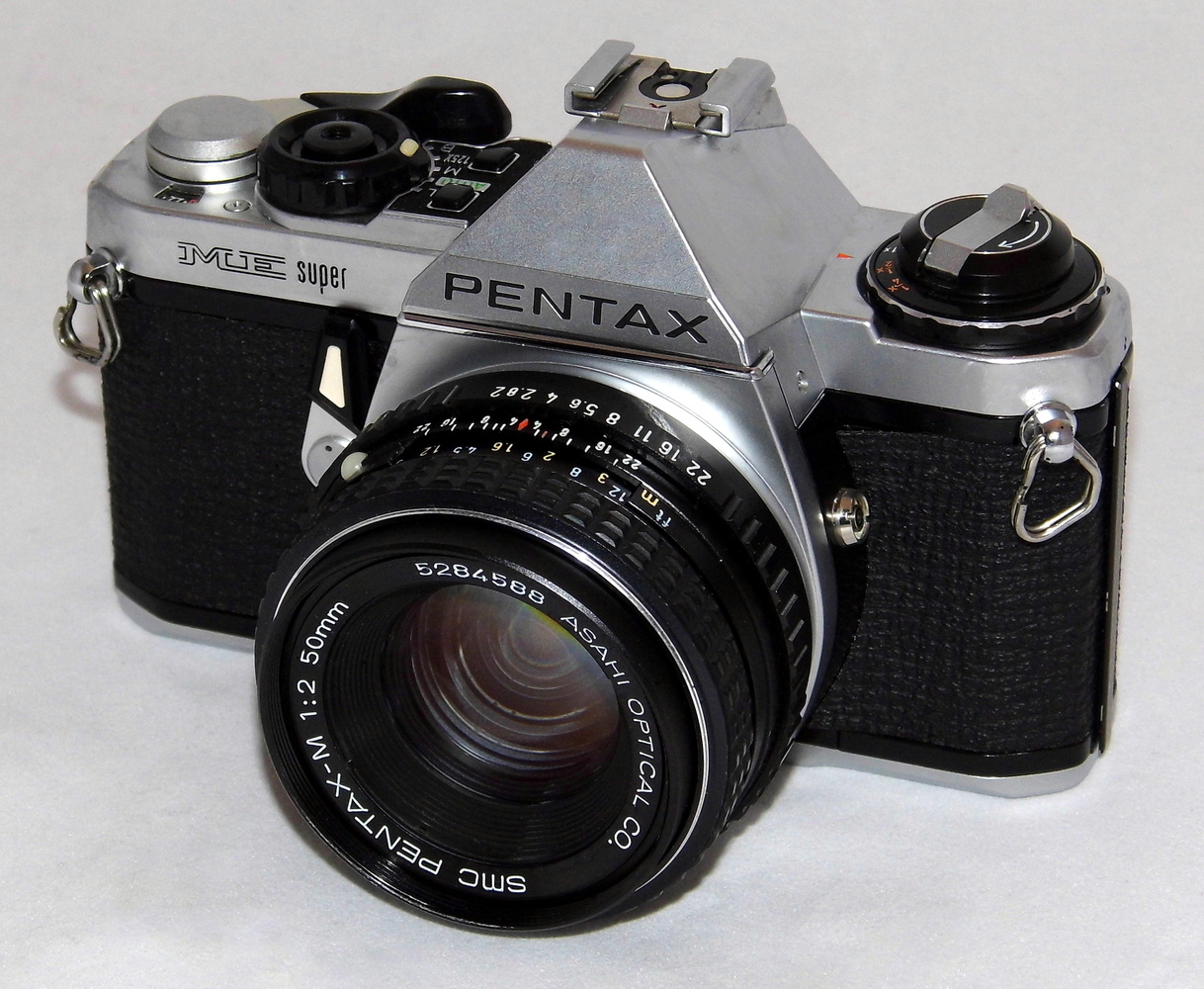
The ME Super's greatest asset is its seamless integration with Pentax's K-mount lens system, providing access to decades of optical innovation at remarkably affordable prices. From compact pancake lenses perfect for street photography to professional-grade telephotos, the K-mount system offers tools for virtually every photographic discipline. The camera's electronic systems require battery power for all functions, making it essential to carry spares, but the sophisticated exposure automation and precise shutter control justify this dependence. For photographers seeking maximum features in minimum space, the ME Super represents an ideal balance of capability and portability that remains appealing to modern film shooters who value discretion alongside performance.
9. Zeiss Ikon ZM
Expect to Pay: $1,600-2,400
The Zeiss Ikon ZM represents a fascinating chapter in photography history as one of the few successful attempts to create an affordable alternative to Leica's legendary M-mount rangefinder cameras. Introduced in 2005 through a collaboration between Zeiss and Cosina, the ZM delivers an authentic rangefinder shooting experience. The camera's bright, clear optical viewfinder provides framelines for 35mm, 50mm, and 85mm focal lengths, covering the most popular rangefinder lens options while maintaining the unobstructed view that makes rangefinders so appealing for street and documentary photography.
 What sets the ZM apart from other rangefinder alternatives is its genuine Zeiss engineering and quality control, ensuring the precision manufacturing that rangefinder cameras demand for accurate focusing and reliable operation. The camera's electronic shutter system operates from 16 seconds to 1/2,000 second with remarkable consistency, while the precise rangefinder mechanism allows for accurate manual focusing. Zeiss designed the ZM to accept the full range of Leica M-mount lenses, providing instant access to arguably the finest optical system.
What sets the ZM apart from other rangefinder alternatives is its genuine Zeiss engineering and quality control, ensuring the precision manufacturing that rangefinder cameras demand for accurate focusing and reliable operation. The camera's electronic shutter system operates from 16 seconds to 1/2,000 second with remarkable consistency, while the precise rangefinder mechanism allows for accurate manual focusing. Zeiss designed the ZM to accept the full range of Leica M-mount lenses, providing instant access to arguably the finest optical system.
The ZM's compact, mechanical design appeals to photographers who appreciate the contemplative, deliberate approach that rangefinder cameras encourage, where every frame requires conscious composition and focusing decisions. Its quiet, vibration-free operation makes it ideal for street photography, documentary work, and any situation where discretion is paramount. While the camera lacks some modern conveniences like built-in light metering, this simplicity appeals to photographers who prefer external meters or have developed the experience to judge exposure by eye. For photographers seeking an authentic rangefinder experience with access to legendary Leica glass, the ZM represents exceptional value and proven quality that honors the rangefinder tradition while remaining accessible to serious enthusiasts.
10. Canon EOS-1V
Expect to Pay: $600-900
The Canon EOS-1V represents the absolute pinnacle of Canon's film camera development, serving as the professional flagship that competed directly with the most advanced cameras of its era while establishing features that would influence digital camera design for decades to come. Released in 2000 as Canon's answer to the demands of professional photographers who needed cutting-edge technology wrapped in bulletproof construction, the 1V incorporates a sophisticated 45-point autofocus system that tracks subjects with remarkable precision across the frame. This advanced AF system, combined with Canon's legendary build quality and weather-sealing, created a camera that could handle the most demanding professional assignments from sports arenas to war zones.
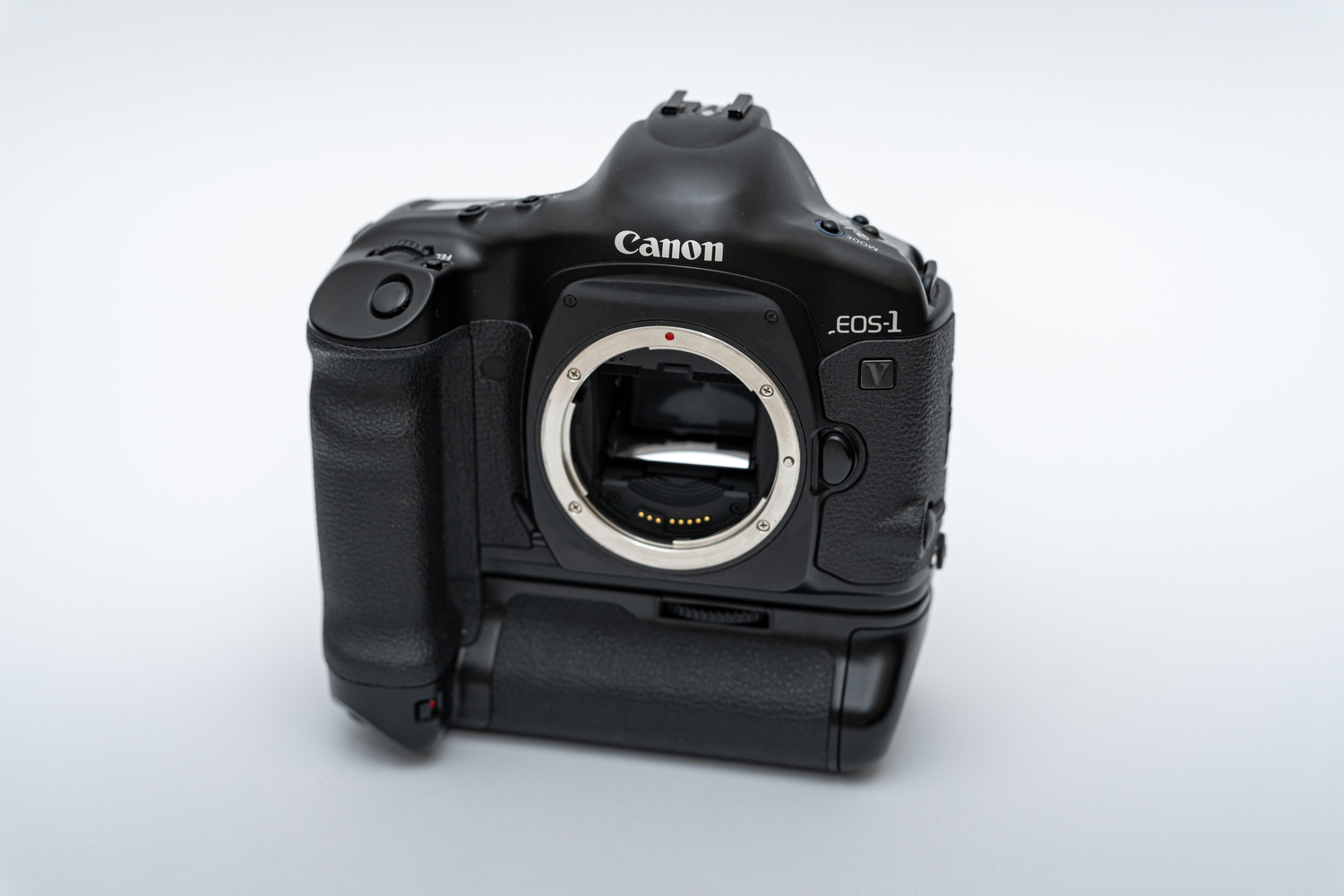
The 1V's greatest advantage lies in its complete compatibility with Canon's extensive EF lens system, providing access to the same professional optics that define modern digital photography. From ultra-wide angle zooms to supertelephoto primes with image stabilization, the EF system offers tools for virtually every professional application while maintaining the optical excellence that Canon's reputation was built upon. For photographers seeking the ultimate in film camera technology with modern lens compatibility, the 1V represents an investment in proven professional tools that continue to deliver exceptional results. I certainly regret selling mine.
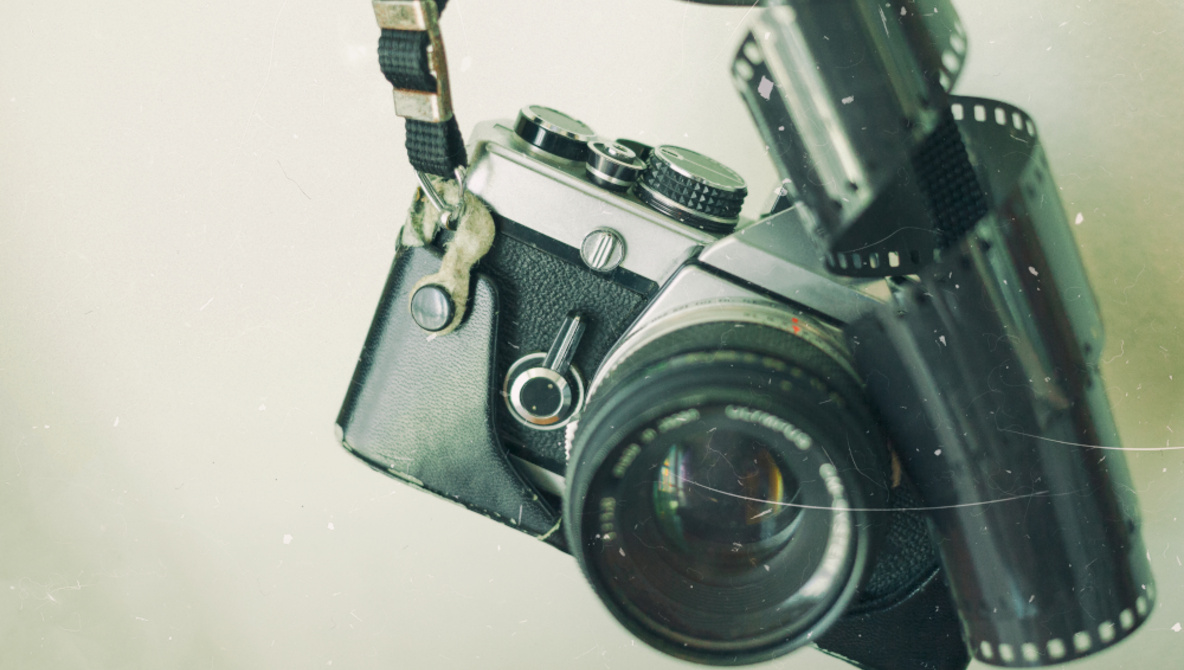






I've never had any of these cameras, but the ones I've kept (and on the rare occasion use) are the Leica R3, Pentax MZ-5 (a lovely small cam and mine is in mint condition), Olympus Trip 35, Olympus XA and finally a Yashica Matt 124G.
Of all of your film cameras, which is your favorite?
Heck, that's a difficult question. Of my current cameras I think it is the Olympus Trip. Of the cameras I have had, it has to be the Rolleiflex 2.8C. I regret selling that one.
I worked in the secondary schools and tertiary education sector here in Australia and the Pentax K1000 was the staple body that was used (and abused) by students at nearly all institutions.
I was given a Canon EOS500 a few years ago but I haven't put any rolls through it yet...one day...for film I've been too busy playing with my Zeiss Ikon 515/2 folding camera
Having been in the Pentax system for 48 years, I concur with the ME Super, but will add the KX (both of which I used to have) and the K2 / K2DMD. Both the ME Super and the K2 have 1/125s mechanical shutter speeds (and an additional 1/1000s speed In case of the K2s) If batteries die all I need to do is to pull out the "Sunny f 16 rule" of my brain and "listo" (ready).
If Nikon was my thing (and I thought about it occasionally), I'll add the FE2 due to mechanical 1/250s shutter speed and the F5 due to AA batteries powering (Dollar store, anyone, anyone?) and interchangeable viewfinders for eye and waist level viewing to this list.
In the late 1980s I owned the Minolta X-700's younger sibling the X-570, which was essentially the same camera without Program mode. I wasn't impressed when their Maxxum line came out, so I switched to Canon in 1991 and bought an Elan, which I still own along with its first-generation EF 28-80 kit lens (correction to the article: it was called the EOS Elan in North America and the EOS 100 everywhere else). It was a great all-around camera that served me well for many years until I switched to digital, and the reason I stayed with Canon.
Today my Canon collection has four 35mm (Elan, A2E, and two rare models -- an RT with a pellicle mirror and a EF-M manual focus) and two digital (5D Mark IV and 7D Mark II) bodies. And the coolest part? While I have many other EF and EF-S lenses, that same original 28-80 fits all of them.
My son took a college photo 101 class last year and needed a film camera. We bought a mint Nikon F4 for $225.00 on Ebay. All of his classmates showed up with AE-1s, X700s, FM2s, and similar. Every single student in the class had camera failures throughout the semester except my son with his F4. I think the problem is a lot of those cameras from the 1970s are just so darn old at this point. A person really needs to get the seals replaced and have the camera refurbished after purchasing something that old. The kicker is most of the other students paid more money for their cameras than we did for the F4! It's an incredible camera that is way underpriced in today's used market, probably because it doesn't have the classic look of those 1970's manual SLRs.
I still have my Nikon FM2 purchased new in 1984, and I would NOT part with it for "$250-300."
Some odd choices, Pentax ME over the mechanical MX with it's great viewfinder and exposure LEDs. The. K1000 is ok a bit of a brick, but include the KM same value but more features.Nikon FM2 - is great but the FM is lower priced and equally as useful and takes non AI lenses. A miss - the Nikon F301, tough and reliable.
The OM1 is a fantastic camera. I have a couple of them and the original M1 and still use them. The only issue is dealing with a battery substitute given the original type is unavailable. The camera shutter works without a battery, but the meter doesn't. Perhaps the OM2, only slightly less iconic, is a better choice given it uses a battery that is available.
I recently found a repair shop that cheaply converted My two OM-1's to modern batteries. Works great.
My Kodak Tele-Instamatic 608 made me like taking pictures. But my Minolta X-700 made me a photographer. So happy to see it here.
No mention of the OM10?
Not as glamourous as its more 'professional' siblings but still an excellent performer even today.
Relative cheap and still plentiful.
The K1000 and Canon AE-1 are grossly overpriced. The K1000 goes for more than superior, but less well known Pentax models of the time like the KM, KX and maybe the then top of the line K2! It also goes for more than the Olympus OM-1, which is in a whole different league in terms of capability and quality. Also never liked the Canon AE-1, with its inevitable shutter squeal, cheaper plasticy construction and shutter priority (vs aperture priority) AE, which is far less useful for beginners.
I can’t believe you entirely overlooked Contax. The all-mechanical S2, small motor-driven 167MT,
ground-breaking G1 and G2 autofocus rangefinders, the RTS III, with its film-flattening vacuum pressure plate, and some of the best lenses of their time.
I started shooting for a living in 1973 in college and borrowed a Minolta SRT 101 until I could afford my own camera. When I could I bought the original OM-1 and knew I had the newest coolest camera around. I like a smaller and lighter setup. Some 10 years later I was moving from a small newspaper to a metro newspaper and the staff was Nikon. I knew if I wanted to borrow gear I should switch so I did and bought a Nikon FM2 and and F3. But the FM2 was my go-to for almost all news assignments. Another small, rugged simple reliable body. At one point during the film days I started teaching as an adjunct at a small college and when a student needed a camera I often suggested a Pentax K1000. Every one of those camera rightly belongs on this list. And I still have my FM2 and two OM-1 bodies and a few lenses, all ready to hit the streets.
I still use film cameras. Battery-independent operation and a decent lens park are the two main attractions for me in terms of hardware.